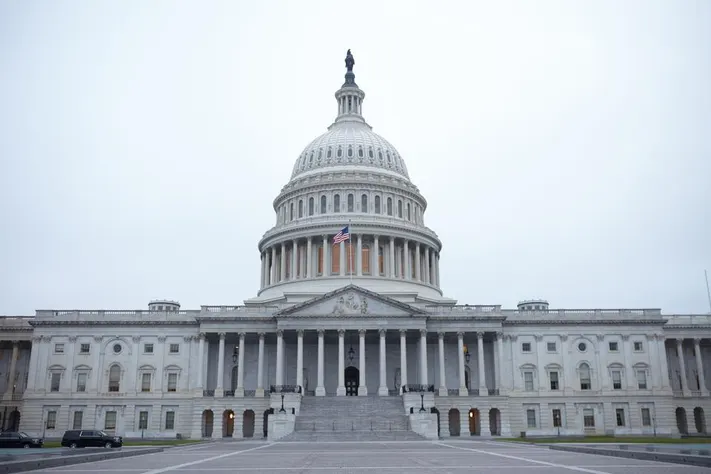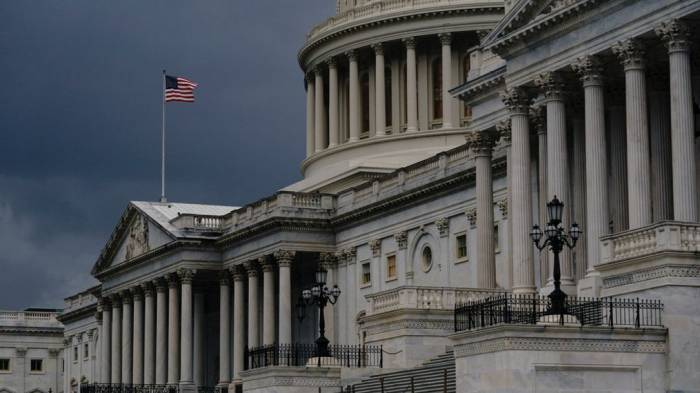The US Budget Deficit surged to $1.833 trillion for fiscal 2024, marking the third-largest federal deficit in the nation’s history. This budget gap, which reflects the difference between government spending and revenue, is surpassed only by the pandemic-era deficits of fiscal 2020 and 2021.
With key factors including rising interest on federal debt, increased spending on Social Security and defense, and broader economic conditions, this fiscal imbalance has generated considerable discussion about the nation’s fiscal policies and future economic stability.
As the U.S. enters a crucial political period, with the presidential election looming in November 2024, the budget deficit is expected to be a central topic of debate. Both major political parties are presenting vastly different plans for managing the federal budget and debt in the years ahead.
The Surge in the US Budget Deficit: Key Factors Behind the $1.8 Trillion Gap
Fiscal year 2024 closed with a staggering $1.833 trillion deficit, an 8% increase over the $1.695 trillion deficit recorded in fiscal 2023. This surge is largely attributable to several key factors, including the escalating costs of servicing federal debt, increased spending on entitlement programs such as Social Security and Medicare, and military expenditures.
One of the most significant contributors to the fiscal gap was the rise in interest costs on Treasury debt. For the first time in U.S. history, the cost of servicing federal debt exceeded $1 trillion, reaching $1.133 trillion in fiscal 2024.
Read : US Scientists Created Electronic Tongue to Detect Spoilt Food
This 29% increase in interest payments was driven by a combination of higher interest rates and a growing national debt. The Federal Reserve’s efforts to control inflation by raising interest rates have significantly increased borrowing costs for the federal government.
At the same time, the overall debt burden continues to grow as the government borrows more to finance its spending obligations.
In addition to rising interest costs, Social Security and Medicare—two of the largest federal entitlement programs—also saw significant increases in spending. Social Security payments grew by 7%, reaching $1.520 trillion in fiscal 2024.
Read : Russia Formally Declares the US as an “Enemy” State
This increase reflects both the growing number of retirees drawing benefits and the inflation-adjusted cost-of-living adjustments (COLAs) applied to Social Security payments. Similarly, Medicare spending rose by 4% to $1.050 trillion, as more seniors became eligible for the program and healthcare costs continued to rise.
Military spending was another driver of the deficit, with the Department of Defense budget increasing by 6% to $826 billion. Rising global tensions, increased military engagements, and investments in new defense technologies have all contributed to the growth in defense expenditures.
Political Implications: The Deficit in the 2024 Presidential Race
The growing deficit is poised to play a central role in the 2024 presidential election, as Vice President Kamala Harris and former President Donald Trump present contrasting visions for the nation’s fiscal future. Harris, who is seeking to succeed President Joe Biden, has emphasized the Biden administration’s investments in infrastructure, clean energy, and advanced manufacturing as key drivers of economic growth.
At the same time, she has stressed the administration’s commitment to fiscal responsibility, particularly by raising taxes on the wealthiest individuals and corporations to ensure they pay their “fair share” of taxes.
The White House has pointed to record-high receipts for fiscal 2024 as evidence of the administration’s effective tax policies. U.S. receipts, which include revenues from taxes and other sources, reached $4.919 trillion in fiscal 2024, an 11% increase from the previous year.
Much of this increase was driven by higher individual non-withheld tax collections and corporate tax receipts, reflecting strong economic growth and the Biden administration’s focus on ensuring that large corporations contribute more to the federal budget.

However, Harris and the Democrats face a significant challenge in defending the administration’s fiscal policies in light of the growing deficit. While the fiscal 2023 deficit was reduced by the reversal of $330 billion in costs related to President Biden’s student loan forgiveness program—struck down by the U.S.
Supreme Court—the fiscal 2024 budget shortfall remained large at 6.4% of gross domestic product (GDP). This increase from 6.2% in the previous year raises concerns about the long-term sustainability of federal spending.
In contrast, Trump and the Republicans have criticized the Biden administration for failing to control government spending and have called for deep cuts to federal programs. The Committee for a Responsible Federal Budget has estimated that Trump’s fiscal plans would add $7.5 trillion in new debt over the next decade, more than double the $3.5 trillion in new debt expected under Harris’ proposals.
The deficit debate is likely to intensify as the election draws nearer, with both candidates facing pressure to offer viable solutions to the nation’s fiscal challenges.
Economic Consequences: The Impact of Rising Debt and Interest Costs
The long-term economic consequences of the growing deficit are a key concern for economists and policymakers alike. With federal debt continuing to rise, interest costs are expected to consume an increasingly large share of the federal budget, potentially crowding out spending on other priorities such as infrastructure, education, and social services.
In fiscal 2024, interest costs accounted for 3.93% of GDP, the highest percentage since 1998 and just below the record of 4.69% set in 1991. As interest rates remain elevated, the cost of servicing federal debt is likely to continue rising, particularly as more debt is issued to finance future deficits. The weighted average interest rate on federal debt rose to 3.32% in September 2024, up 35 basis points from the previous year.
Rising interest costs also have implications for the broader economy. As the government borrows more to finance its deficits, it competes with the private sector for available capital, potentially driving up borrowing costs for businesses and consumers. Higher interest rates could dampen investment and slow economic growth, exacerbating the fiscal challenges facing the nation.
At the same time, growing debt levels raise concerns about the government’s ability to respond to future economic crises. During the COVID-19 pandemic, the federal government was able to borrow heavily to fund relief programs and stabilize the economy. However, with the debt-to-GDP ratio already at historically high levels, the government may have less fiscal flexibility in the event of a future recession or financial crisis.
The U.S. fiscal situation also has implications for international financial markets. As the largest issuer of sovereign debt in the world, the U.S. plays a central role in global finance.

Rising U.S. debt levels and concerns about the nation’s fiscal stability could lead to higher interest rates on U.S. Treasury securities, which are widely held by foreign governments, central banks, and investors. This could increase the cost of borrowing not only for the U.S. government but also for businesses and consumers around the world.
The US Budget Deficit reaching $1.833 trillion in fiscal 2024 highlights the complex and interconnected nature of federal fiscal policy. Rising interest costs, growing entitlement spending, and increasing military expenditures are all contributing to the widening budget gap.
At the same time, record-high receipts from taxes and other revenues reflect a strong economy and the Biden administration’s efforts to ensure that corporations and the wealthiest Americans pay more into the federal coffers.
As the 2024 presidential election approaches, the deficit is likely to remain a key issue in the political debate. Harris and the Democrats are touting their economic achievements and commitment to fiscal responsibility, while Trump and the Republicans are calling for deep cuts to federal spending and a return to more conservative fiscal policies.
Whichever path voters choose, the next administration will face the daunting task of addressing the nation’s growing debt and ensuring that the federal budget is sustainable in the long term.
let’s enjoy few years on earth with peace and happiness….✍🏼🙏

